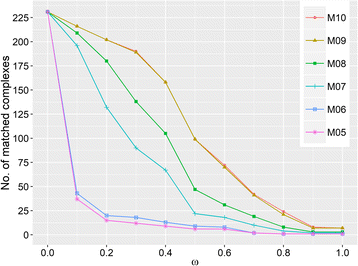PPI network analyses of human WD40 protein family systematically reveal their tendency to assemble complexes and facilitate the complex predictions
- PMID: 29745845
- PMCID: PMC5998875
- DOI: 10.1186/s12918-018-0567-9
PPI network analyses of human WD40 protein family systematically reveal their tendency to assemble complexes and facilitate the complex predictions
Abstract
Background: WD40 repeat proteins constitute one of the largest families in eukaryotes, and widely participate in various fundamental cellular processes by interacting with other molecules. Based on individual WD40 proteins, previous work has demonstrated that their structural characteristics should confer great potential of interaction and complex formation, and has speculated that they may serve as hubs in the protein-protein interaction (PPI) network. However, what roles the whole family plays in organizing the PPI network, and whether this information can be utilized in complex prediction remain unclear. To address these issues, quantitative and systematic analyses of WD40 proteins from the perspective of PPI networks are highly required.
Results: In this work, we built two human PPI networks by using data sets with different confidence levels, and studied the network properties of the whole human WD40 protein family systematically. Our analyses have quantitatively confirmed that the human WD40 protein family, as a whole, tends to be hubs with an odds ratio of about 1.8 or greater, and the network decomposition has revealed that they are prone to enrich near the global center of the whole network with a fold change of two in the median k-values. By integrating expression profiles, we have further shown that WD40 hub proteins are inclined to be intramodular, which is indicative of complex assembling. Based on this information, we have further predicted 1674 potential WD40-associated complexes by choosing a clique-based method, which is more sensitive than others, and an indirect evaluation by co-expression scores has demonstrated its reliability.
Conclusions: At the systems level but not sporadic examples' level, this work has provided rich knowledge for better understanding WD40 proteins' roles in organizing the PPI network. These findings and predicted complexes can offer valuable clues for prioritizing candidates for further studies.
Conflict of interest statement
Ethics approval and consent to participate
Not applicable.
Consent for publication
Not applicable.
Competing interests
The authors declare that they have no competing interests.
Publisher’s Note
Springer Nature remains neutral with regard to jurisdictional claims in published maps and institutional affiliations.
Figures





References
Publication types
MeSH terms
LinkOut - more resources
Full Text Sources
Other Literature Sources

